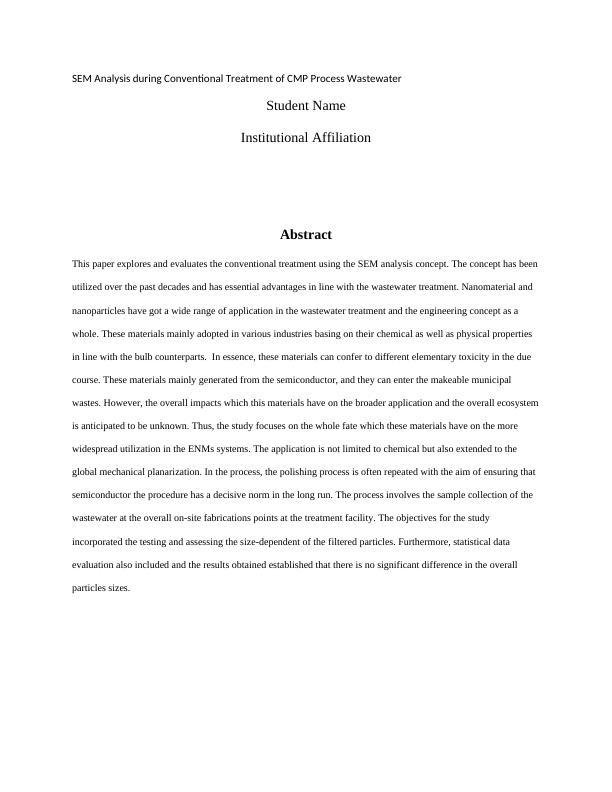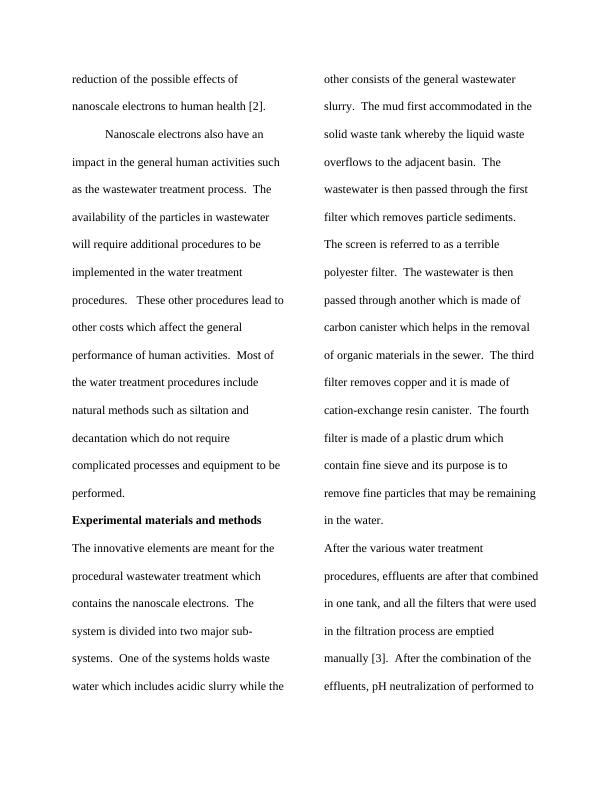SEM Analysis during Conventional Treatment of CMP Process Wastewater
Write a comprehensive research paper with a research plan based on extending the research outlined in the journal paper on SEM analysis of particle size during conventional treatment of CMP process wastewater.
16 Pages4528 Words98 Views
Added on 2023-06-04
About This Document
This paper explores and evaluates the conventional treatment using the SEM analysis concept. The concept has been utilized over the past decades and has essential advantages in line with the wastewater treatment. Nanomaterial and nanoparticles have got a wide range of application in the wastewater treatment and the engineering concept as a whole.
SEM Analysis during Conventional Treatment of CMP Process Wastewater
Write a comprehensive research paper with a research plan based on extending the research outlined in the journal paper on SEM analysis of particle size during conventional treatment of CMP process wastewater.
Added on 2023-06-04
ShareRelated Documents
End of preview
Want to access all the pages? Upload your documents or become a member.
Assignment on Impact of Marine Pollution on Aquatic Environment
|7
|1673
|15
Assignment On Wastewater Treatment
|16
|4362
|28
(PDF) Role of Aquatic Plants in Wastewater Treatment
|36
|8795
|104
Synergic Adsorption for Heavy Metal and Dye Removal using Zeolite Clinoptilolite Powder - Desklib
|85
|15297
|219
Zinc Adsorption from Waste
|30
|6726
|180
Wastewater treatment and technologies reviews PDF
|5
|1522
|197




